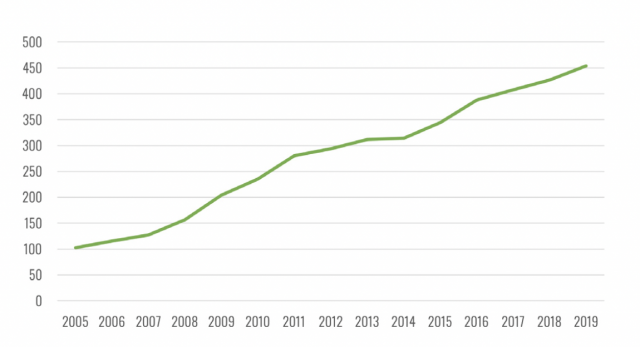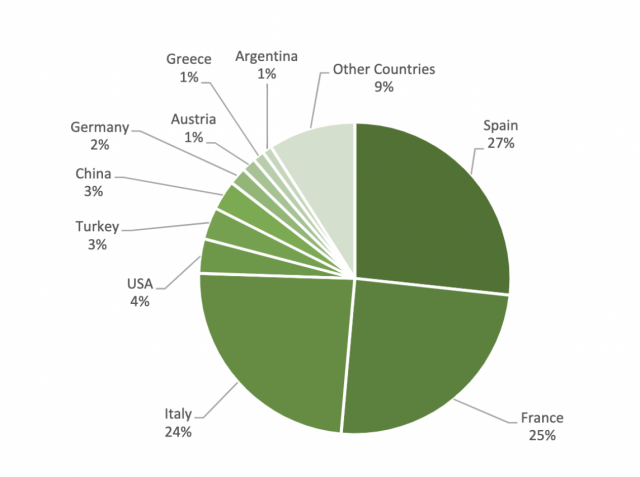This website uses cookies so that we can provide you with the best user experience possible. Cookie information is stored in your browser and performs functions such as recognising you when you return to our website and helping our team to understand which sections of the website you find most interesting and useful.
Global organic vineyard area increases ‘considerably’
According to an OIV publication released today, the conversion rate of vineyards to organic production has “increased considerably” since the beginning of this century, although the total is still relatively small.

The OIV report – which considers certified organic vineyard areas producing wine and table grapes as well as raisins – recorded that there were 63 countries across all continents involved in organic viticulture in 2019, with the total global organic vineyard surface area estimated at 454,000 hectares, representing 6.2% of the world’s area under vines.
The publication also showed that the certified organic vineyard surface area increased by an average of 13% per year over the period 2005–2019, while the ‘non-organic’ vineyard area decreased by an average of 0.4% per year during the same period.
It recorded three distinct growth periods for the global expansion of organic viticulture, with the organic surface areas growing exponentially between 2005 and 2011 (+18% per year on average), only to slow down between 2011 and 2014 to an average annual rate of +4%, and then, from 2014 onwards, to increase again to an average of +8% per year.

Such overall growth, the OIV reported, “can be explained in large part by societal issues, particularly in relation to consumer health and environmental protection.”
It was also recorded that Spain, France and Italy together account for the 75% of the globe’s organic vineyards, while the top 10 countries account for 91% of the world total.
Of these 10 leaders in organic production, three are in Europe: Spain, Italy and France – where organic vineyards are cultivated mainly for producing wine grapes.
This trio is followed by three non-European countries: the United States (4%), which is a major player in organic viticulture, with its surface area divided across the production of wine grapes, table grapes and raisins; then Turkey (3%), which produces mainly table grapes and raisins; and China (3%), which cultivates both table grapes and wine grapes.
Finally, Germany (2%), Austria (1%), Greece (1%) and Argentina (1%), the only representative from South America, complete the top 10 of organic grape growing countries.

In terms of the amount of organic vineyards as a share of the country’s total area under vines, Italy has the greatest proportion of organic vineyards, with a 15% of the nation’s total area under vine, followed by France (14%) and Austria (14%). The only non-European country inside the top 10 is Mexico, with 8% of its vineyard area certified organic.

According to Resolution OIV-ECO 460-2012, organic vitiviniculture is a production system that:
- Seeks to maintain ecosystems and the fertility of soils in the long term,
- Seeks to increase biodiversity and the protection of natural resources,
- Seeks to promote the use of ecological processes and cycles,
- Seeks to minimise or eliminate external interventions and viticultural practices that require the use of chemical synthesis products,
- Seeks to use organic products and processes in transformation and production processes, trying to avoid all techniques that have a considerable negative impact on the environment,
- Excludes the use of genetically modified organisms and inputs derived from genetically modified organisms

